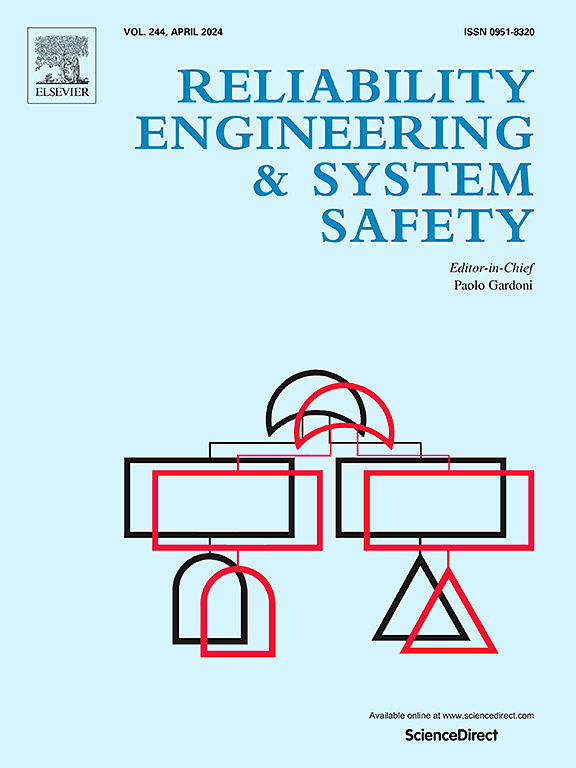An efficient method for solving system failure probability functions based on subset simulation and probability reanalysis techniques
IF 9.4
1区 工程技术
Q1 ENGINEERING, INDUSTRIAL
引用次数: 0
Abstract
Estimating the system failure probability function (FPF) is critical in reliability-based system design and optimization. However, multiple failure modes in a system challenge the estimation process. The probability reanalysis (PRA) method can estimate failure probabilities under various distribution parameters using only a single set of input-output samples. However, combining it with efficient numerical simulation methods can improve its computational efficiency. This paper combines the importance sampling subset simulation (SS-IS) method with the PRA method to propose the SS-IS-PRA method for estimating the system FPF. The proposed method transforms the system FPF into a product of a series of conditional FPFs. Then, a single set of input-output samples is used to solve conditional FPFs layer by layer based on the PRA approach. Furthermore, this paper introduces an IS center selection strategy based on mixed sampling and K-means clustering to enhance the applicability of the SS-IS-PRA method in multi-failure mode problems without additional computational cost. Finally, an adaptive Kriging surrogate model is embedded within the SS-IS-PRA method to enhance the computational efficiency of SS-IS-PRA and better suit real engineering structure analysis. Hence, the SS-IS-PRA-AK method is obtained. The effectiveness and efficiency of the proposed method are validated through four examples.
基于子集仿真和概率再分析技术的系统失效概率函数求解方法
在基于可靠性的系统设计与优化中,系统失效概率函数(FPF)的估计是至关重要的。然而,系统中的多种故障模式对评估过程提出了挑战。概率再分析(PRA)方法仅使用一组输入-输出样本就能估计出各种分布参数下的失效概率。然而,将其与高效的数值模拟方法相结合可以提高其计算效率。本文将重要性抽样子集仿真(SS-IS)方法与PRA方法相结合,提出了估算系统FPF的SS-IS-PRA方法。该方法将系统FPF转换为一系列条件FPF的乘积。然后,利用单组输入输出样本,基于PRA方法逐层求解条件FPFs。此外,本文还引入了一种基于混合采样和K-means聚类的IS中心选择策略,以提高SS-IS-PRA方法在不增加计算成本的情况下对多故障模式问题的适用性。最后,在SS-IS-PRA方法中嵌入自适应Kriging代理模型,提高了SS-IS-PRA的计算效率,更适合实际工程结构分析。由此得到SS-IS-PRA-AK方法。通过四个算例验证了该方法的有效性和高效性。
本文章由计算机程序翻译,如有差异,请以英文原文为准。
求助全文
约1分钟内获得全文
求助全文
来源期刊

Reliability Engineering & System Safety
管理科学-工程:工业
CiteScore
15.20
自引率
39.50%
发文量
621
审稿时长
67 days
期刊介绍:
Elsevier publishes Reliability Engineering & System Safety in association with the European Safety and Reliability Association and the Safety Engineering and Risk Analysis Division. The international journal is devoted to developing and applying methods to enhance the safety and reliability of complex technological systems, like nuclear power plants, chemical plants, hazardous waste facilities, space systems, offshore and maritime systems, transportation systems, constructed infrastructure, and manufacturing plants. The journal normally publishes only articles that involve the analysis of substantive problems related to the reliability of complex systems or present techniques and/or theoretical results that have a discernable relationship to the solution of such problems. An important aim is to balance academic material and practical applications.
 求助内容:
求助内容: 应助结果提醒方式:
应助结果提醒方式:


